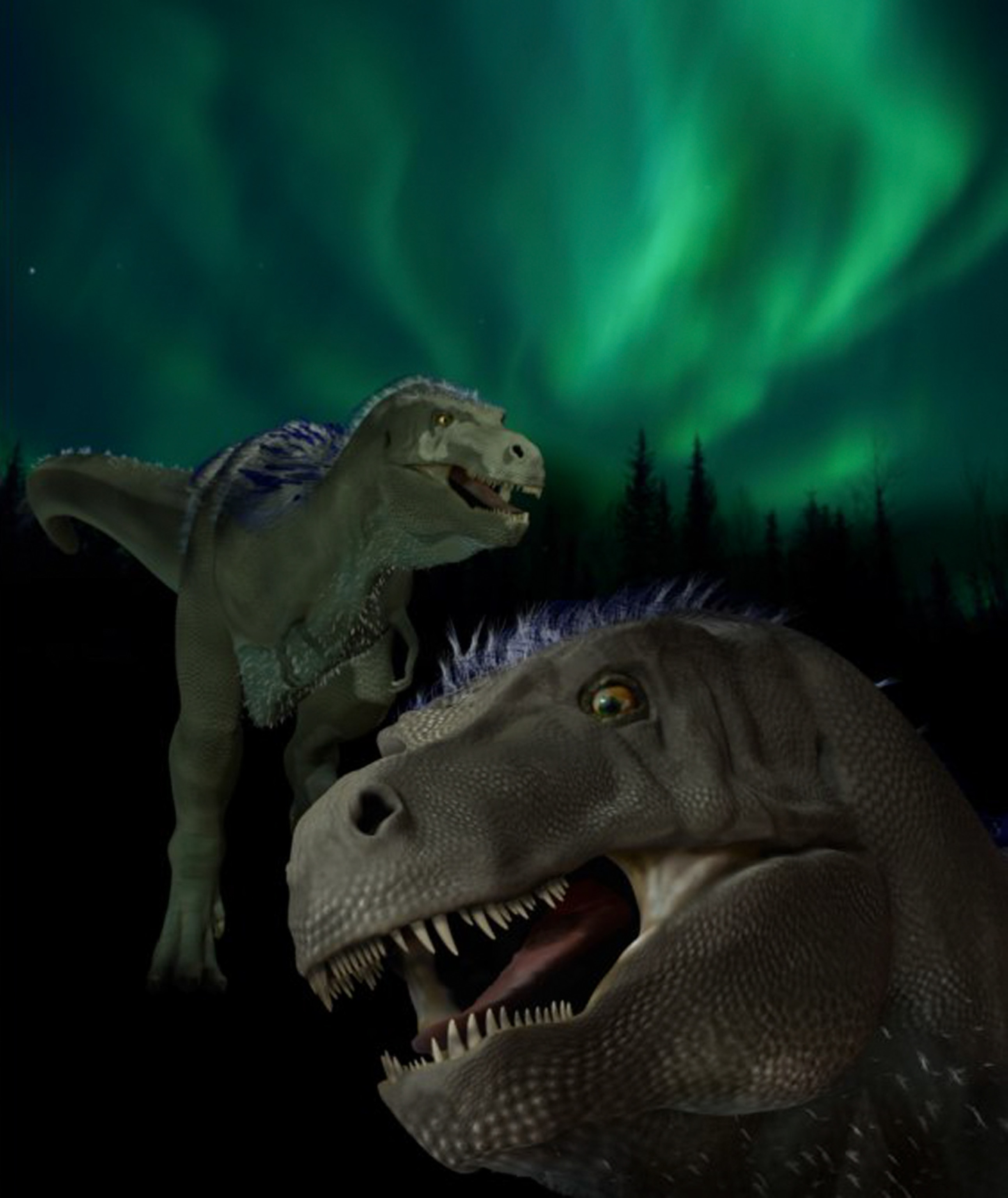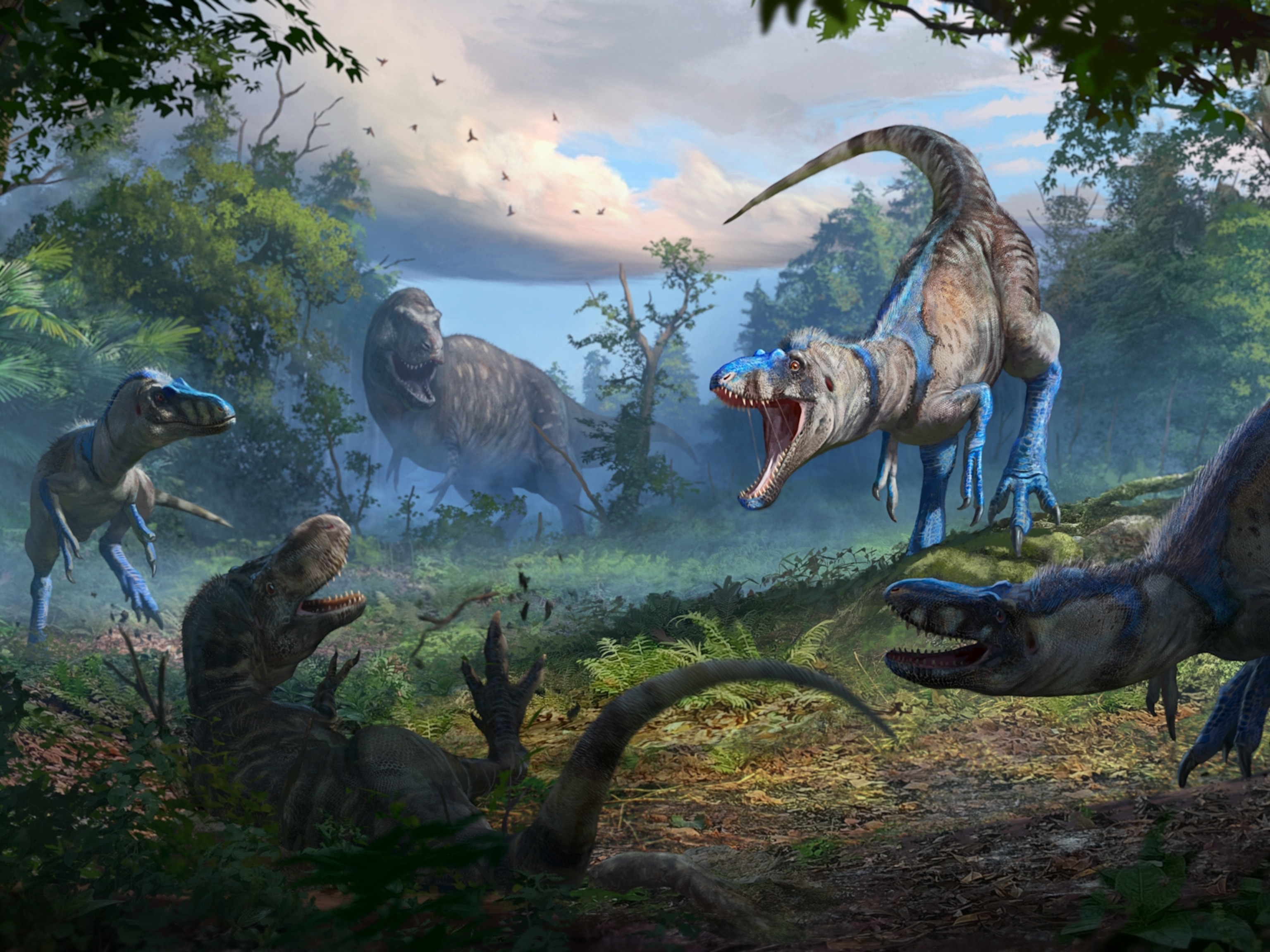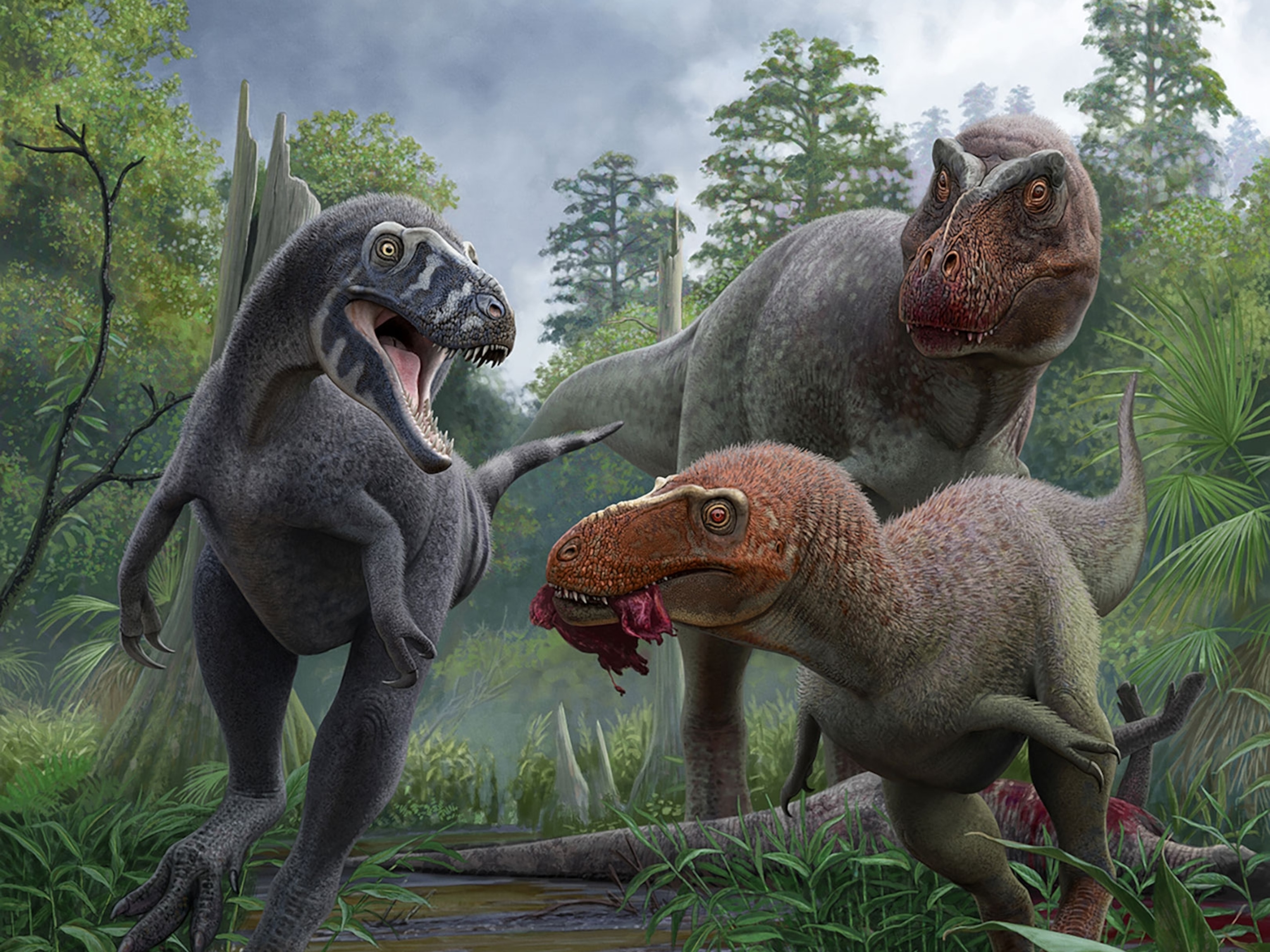
New Pygmy Tyrannosaur Found, Roamed the Arctic
At 20 feet long, Nanuqsaurus hoglundi measured about half the size of T. rex.
A great discovery came in a small package for paleontologists who've unearthed a new species of tiny tyrannosaur in northern Alaska.
Dubbed Nanuqsaurus hoglundi, the polar pygmy measured about 20 feet (6 meters) long, about half the size of its close relative Tyrannosaurus rex. The first part of the dinosaur's name, Nanuq, means "polar bear" in the Alaska Inupiat language, a nod to the tyrannosaur's role as top predator in its late Cretaceous environment. Hoglundi honors philanthropist Forrest Hoglund, according to a new study, which appeared March 12 in the journal PLOS ONE.
Paleontologists nearly overlooked N. hoglundi as they searched for a type of horned dinosaur in the Prince Creek formation in 2006. While removing 70-million-year-old rocks from a hole, paleontologist Tony Fiorillo noticed unusual bones that looked like skull fragments. At the time, though, "we had bigger fish to fry, and we put it aside," he said, but "some things stick in your mind." Later at his lab, Fiorillo realized that indeed he'd found pieces of the top of the skull and jaw of a new tyrannosaur. (Also see "Tiny T. Rex Found—150-Pound Species Came First.")

What's more, a particularly shaped ridge on its head, among other similarities, indicated the carnivore was a close cousin of T. rex—"not some second cousin twice removed kind of deal," quipped Fiorillo, of the Perot Museum of Nature and Science in Dallas.
Why So Small?
Though T. rex is undoubtedly the "all-star center fielder for the New York Yankees in the dinosaur world," Fiorillo said, there are actually many species of tyrannosaur that lived in Asia and North America during the Cretaceous.
In N. hoglundi's day, northern Alaska—then part of an ancient subcontinent called Larimidia—had weather like modern-day Seattle: seasonally cold but not frigid. The dinosaur likely would have wandered in the valleys beneath majestic snow-capped peaks and hunted other dinosaurs, including a duck-billed species, amid towering sequoias and flower-studded coastal plains, said Fiorillo, who received funding from the National Geographic Society/Waitt Grants Program. (Quiz: Test your dinosaur IQ.)
Unlike Seattle, though, the Arctic was still a rough place, with long periods of darkness and light, as well as distinct seasons in which food wasn't readily available. For instance, prey species likely would have exploded in number during the summer, but then fallen off in the dark winter, leaving predators with little to eat.
This lack of food may explain N. hoglundi's diminutive size, since a large animal can't survive on scarce resources, explained Fiorillo. (Watch video: "Dinosaurs 101.")
But that's puzzling, since a general rule of biology is that many animals get bigger at the Poles—the polar bear, for instance, is the largest bear species, noted paleontologist Matt Lamanna, of the Carnegie Museum of Natural History in Pittsburgh. The reason may be that big animals lose heat more slowly than smaller animals do.
"It's a pretty surprising discovery," said Lamanna, who wasn't involved in the new study. "In the modern world you tend to find big stuff at the Poles, and it's interesting that in the Cretaceous world that may not hold true."
Fuzzy Polar Dweller?
Also unknown is the behavior of the newfound dinosaur, though there are a few clues. For instance, the shape of its skull suggests it had an inflated area of its brain devoted to smell, which suggests the animal—like T. rex—relied heavily on scent to hunt its prey.
Also, it's possible that N. hoglundi was covered in fuzz, like other tyrannosaurs. And, Lamanna said, if you consider a "probably warm-blooded creature living at the top of the world, it would stand to reason that maybe [the coat] was a little thicker than relatives farther south." (Related: "One-Ton Feathered Dinosaur Found: Fluffy and Fierce.")
Despite these mysteries, one thing that's brought N. hoglundi to life is the grooves the predator left gnawing on the bones of its prey, which were also found at the Prince Creek site, all those millions of years ago.
"By seeing tooth marks, it makes them the animals that they really were," Fiorillo said, "instead of just a cool collection of objects."





